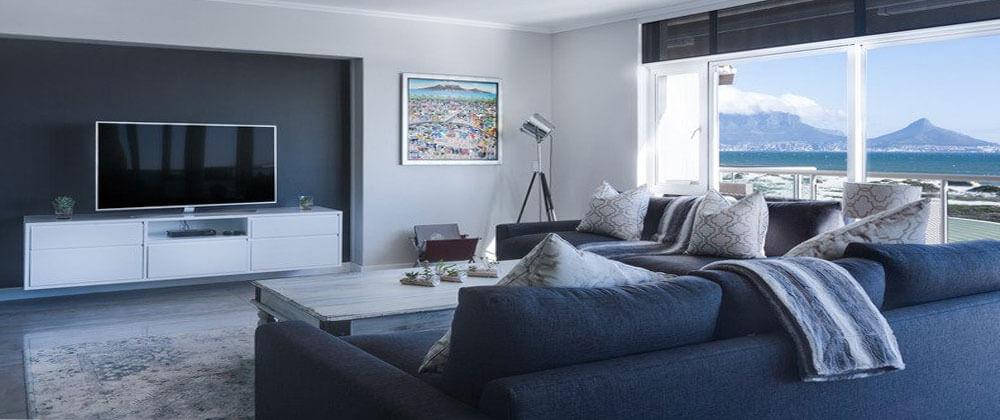
Rental Utilities 101: Pros and Cons of Tenant and Landlord Responsibilities
By: ROS Team
Moving requires budgeting for rent and services that you’ll need to maintain a certain standard of living. Utility bills can quickly add up if you use a lot of services. Making sure you have a clear understanding of what you’re paying for before signing a lease can help you avoid busting your budget later. Here is a breakdown of who pays what in an apartment rental.
1- Which Utilities are Included in Rent
2- Average Cost of Utilities
3- Best Way to Make a Utility Payment
4- How to Check Utilities
5- Pros of Including Utility Costs
6- Cons of Including Utility Costs
Which Utilities are Included in Rent?
Depending on your apartment complex, you may or may not be responsible for some of your unit’s utilities. When looking for an apartment, make sure to ask whether or not the cost of utilities is included in the monthly rent amount. Your lease agreement will also indicate what’s included in the rent, so thoroughly review the lease agreement before signing it.
Electricity, gas, internet, cable, water/sewage, and garbage services are utilities that may be included in rent. If they aren’t included, you’ll be responsible for paying these bills monthly. The landlord typically pays for water, sewage, and garbage collection when you live in an apartment; this would be included in the monthly rent payment. Traditionally, apartments that pay some or all utilities are more expensive or hard to find.
What is the Average Cost of Utilities?
Your utility bills will vary depending on where you reside in the country and whether you’re in a city or a suburb. On average, Americans spend approximately $2,000 every year on electricity expenses alone. This expense is mainly for air conditioning and water heating according to the site Energy.gov.
Electricity and other utilities are necessary to keep your apartment comfortable year-round, and the cost of internet and cable will cost vary depending on the service provider and subscription selected.
What’s the Best Way to Make a Utility Payment?
Even if you’ve never paid a utility bill before, the process is relatively straightforward. Most utility companies now allow you to make payments online. Check your lease agreement for information about your utility providers and how you can get in touch with them. You can also reach out to your landlord for referrals. A few weeks before your move-in date, schedule to have your utilities turned on or installed.

How to Check Utilities
Taking care of utilities well in advance of moving day will assist ensure anyone’s peace of mind. Nobody wants to move across town or country only to find the phone and electricity dead.
Follow These Steps To Move Utility Services:
- Contact your gas, electric, phone, and cable companies at least two weeks before your move to notify them of your plans to move.
- Keep the lights, heat, and phone on until you’ve said goodbye to the movers and locked the front door.
- Arrange to get the same utilities set up at your new home a day before you move in.
Pros of Including Utility Costs in the Rent
1) Convenience
Including the cost of utilities in your rent means fewer monthly bills. Whatever costs incurred from using water, electricity and other services will be paid from the rent you pay at the beginning of the month.
2) No Caps on Service Use
When utilities are included, there may not be a limit to the amount you can use each month for the price you pay. Before signing the lease, talk to the property management and go over the agreement thoroughly so that you fully understand which utilities are covered and whether there’s a usage cap.
3) Reduced Paperwork
Setting up your utility service can be a hassle because you have to schedule times to complete an application, complete a credit check, and time off work so that you’re home when it’s time for installation and/or setup. If everything is included in your rent when you move in, you don’t have to worry about this.
4) You can Create a Fixed Budget
Budgeting can be tricky when you have to account for variable costs, so having utilities rolled into your rent might help you create, and stick to, a monthly budget. You don’t have to worry about fluctuations in your monthly spending due to fluctuating utility costs.

Cons of Including Utility Costs in the Rent
Despite the many benefits of having your utilities included in your rent, there are some drawbacks. To begin, you may be required to pay setup costs to use your utility services. Before you sign your rental agreement, consider the following points:
1) It May Be More Expensive in the Long Run
It’s difficult to know how much you should be paying for utilities if they’re not included in your rent. When everything is included, the utilities are under the landlord’s control. Therefore, tenants must have faith that they are paying a reasonable price for these services.
2) You May Not Be Able to Take Advantage of the Service
Many electric and gas companies give discounts to customers who sign up for additional services or switch from their competitors. However, instead of saving money, you’re likely to pay more money for these services in the long run when the utilities are included with the rent because you won’t have the opportunity to leverage service discounts.
Final Words
Understand clearly what you can afford to pay for rent, whether or not utilities are included. Don’t forget that renting means learning to manage your finances responsibly, and paying the rent should be your top priority. When you’re setting up your utility services can be overwhelming, but it will be worth it once your services are up and running.
Related Article:
What’s Inside Apartment, House, and Business Utilities?
Should Utilities Be Included in Rent?








